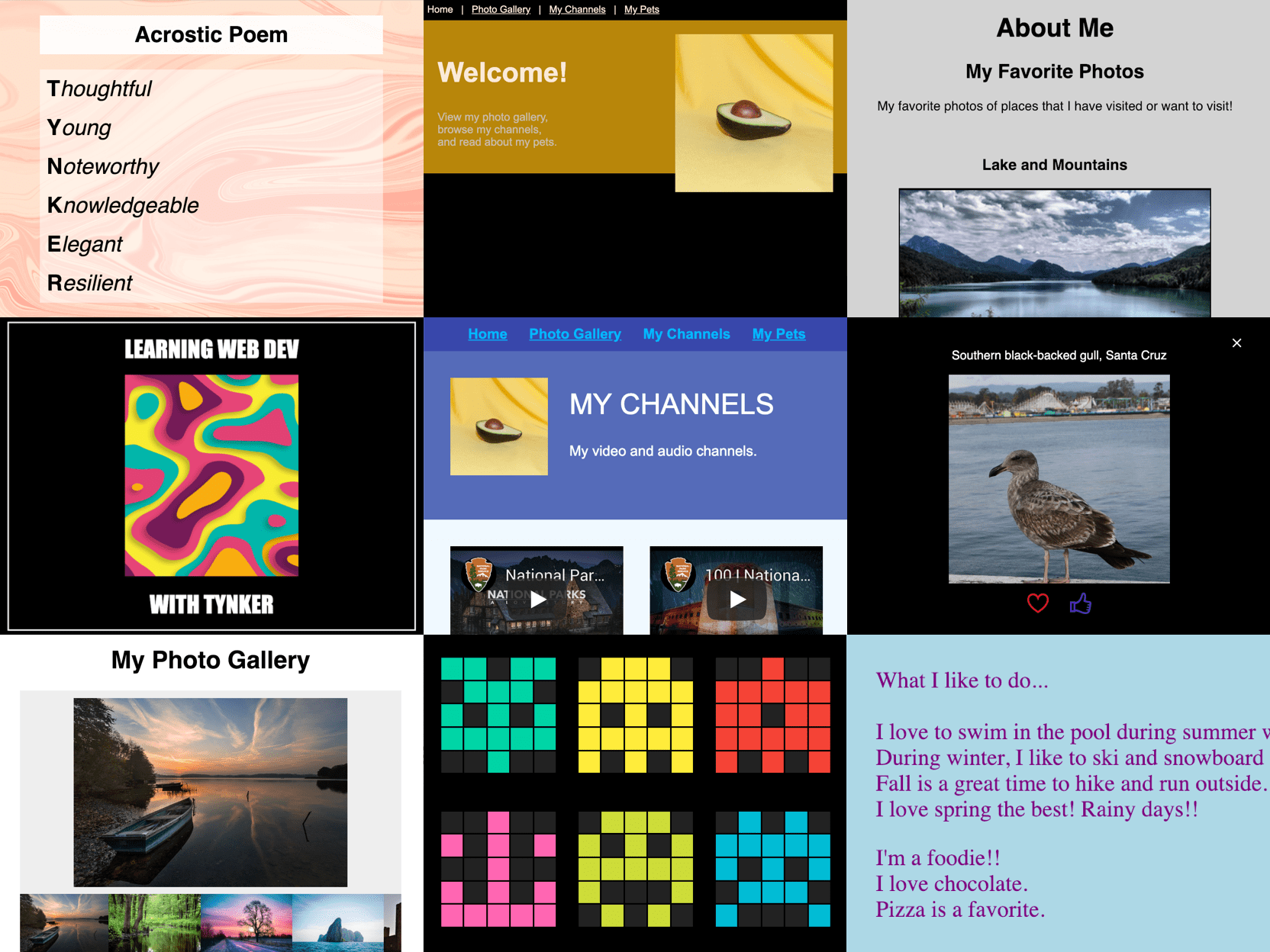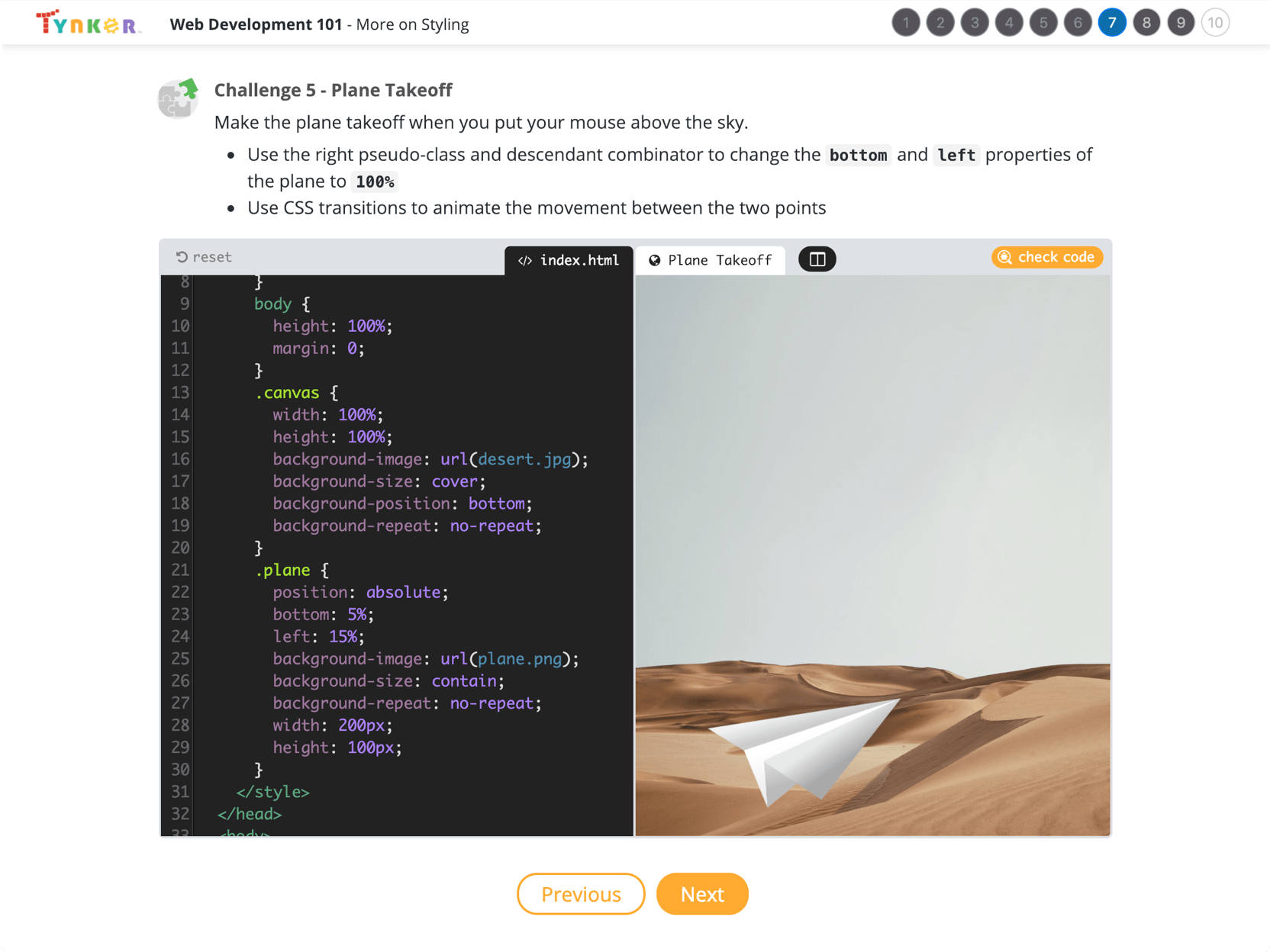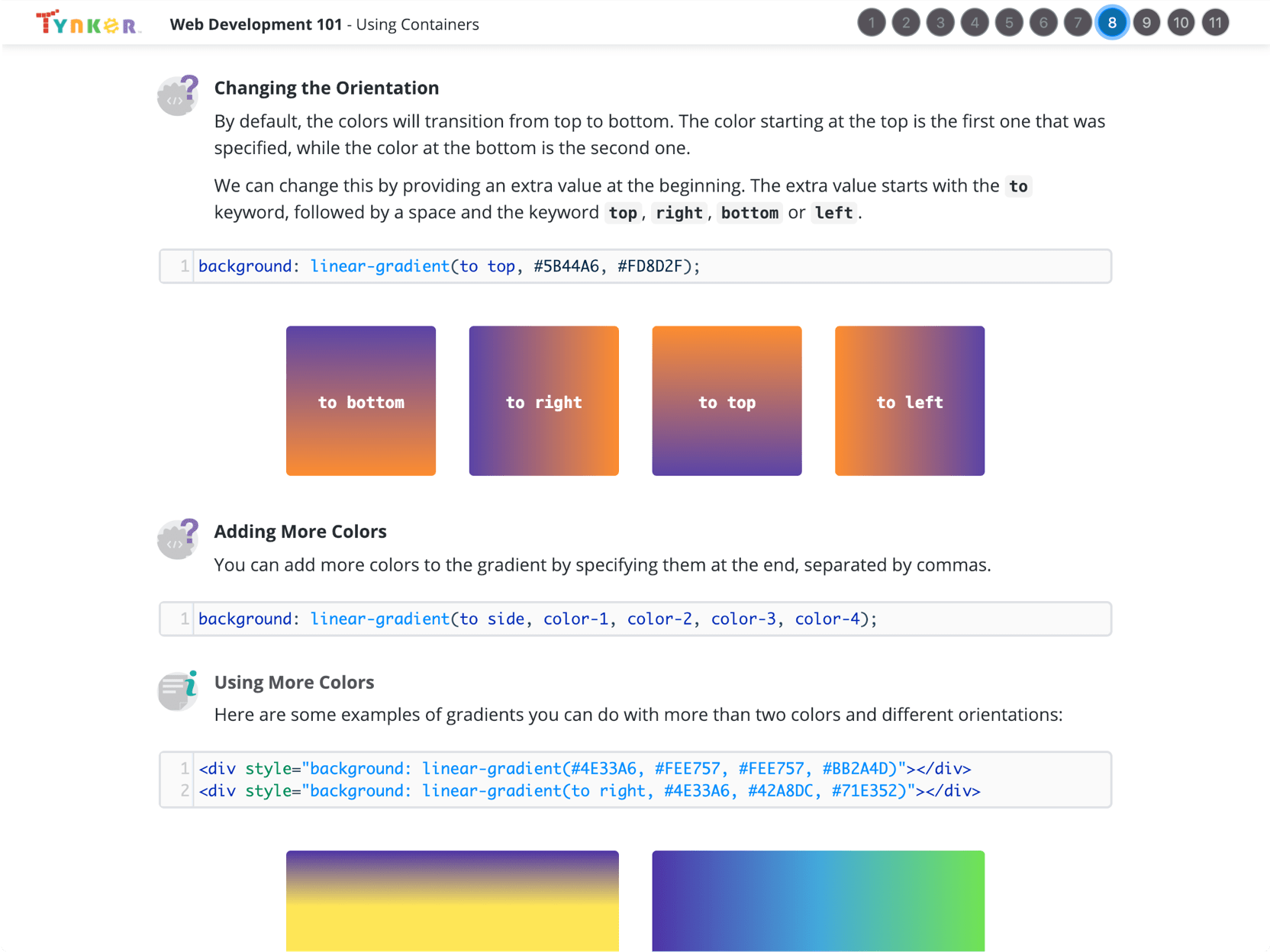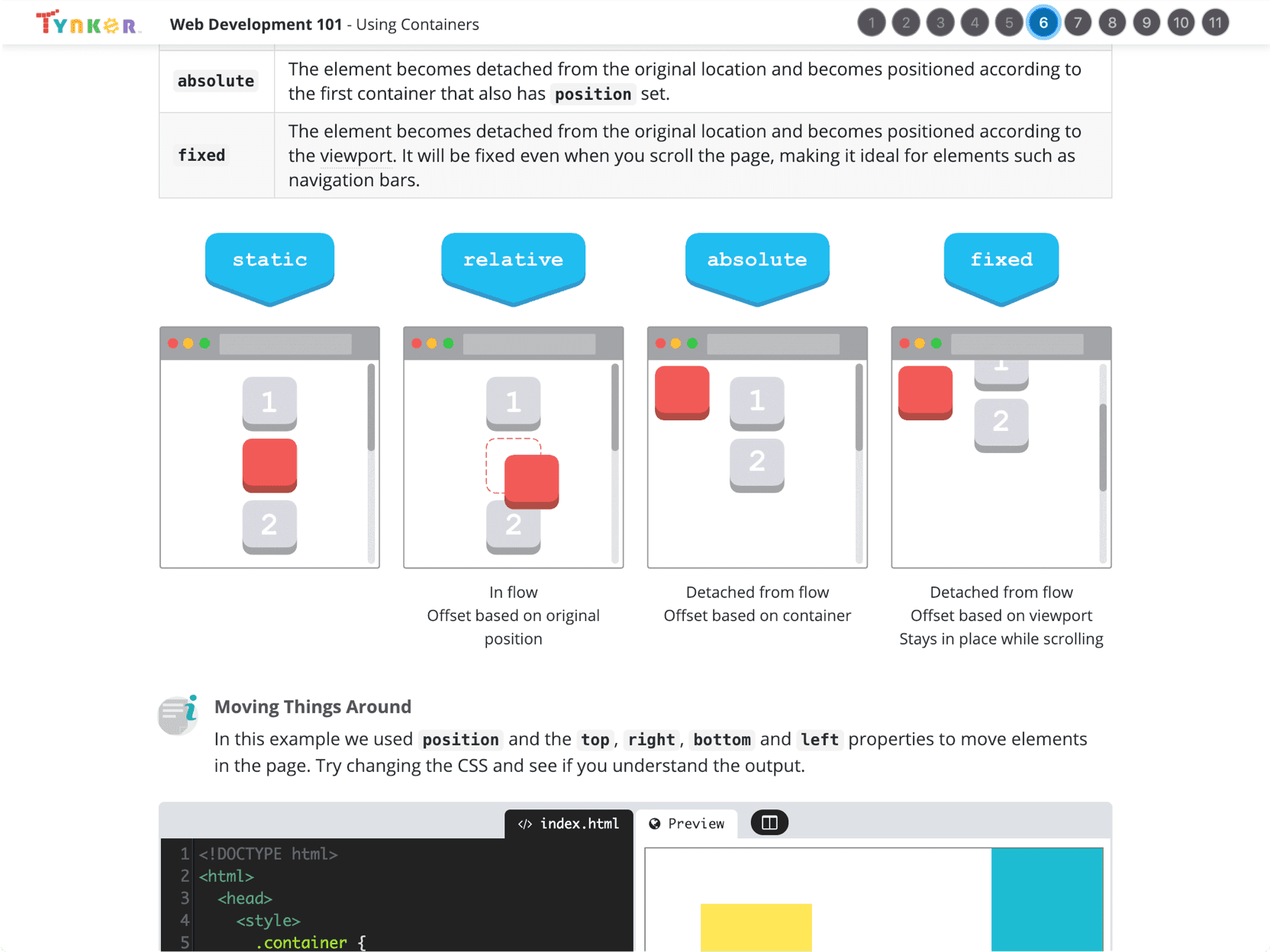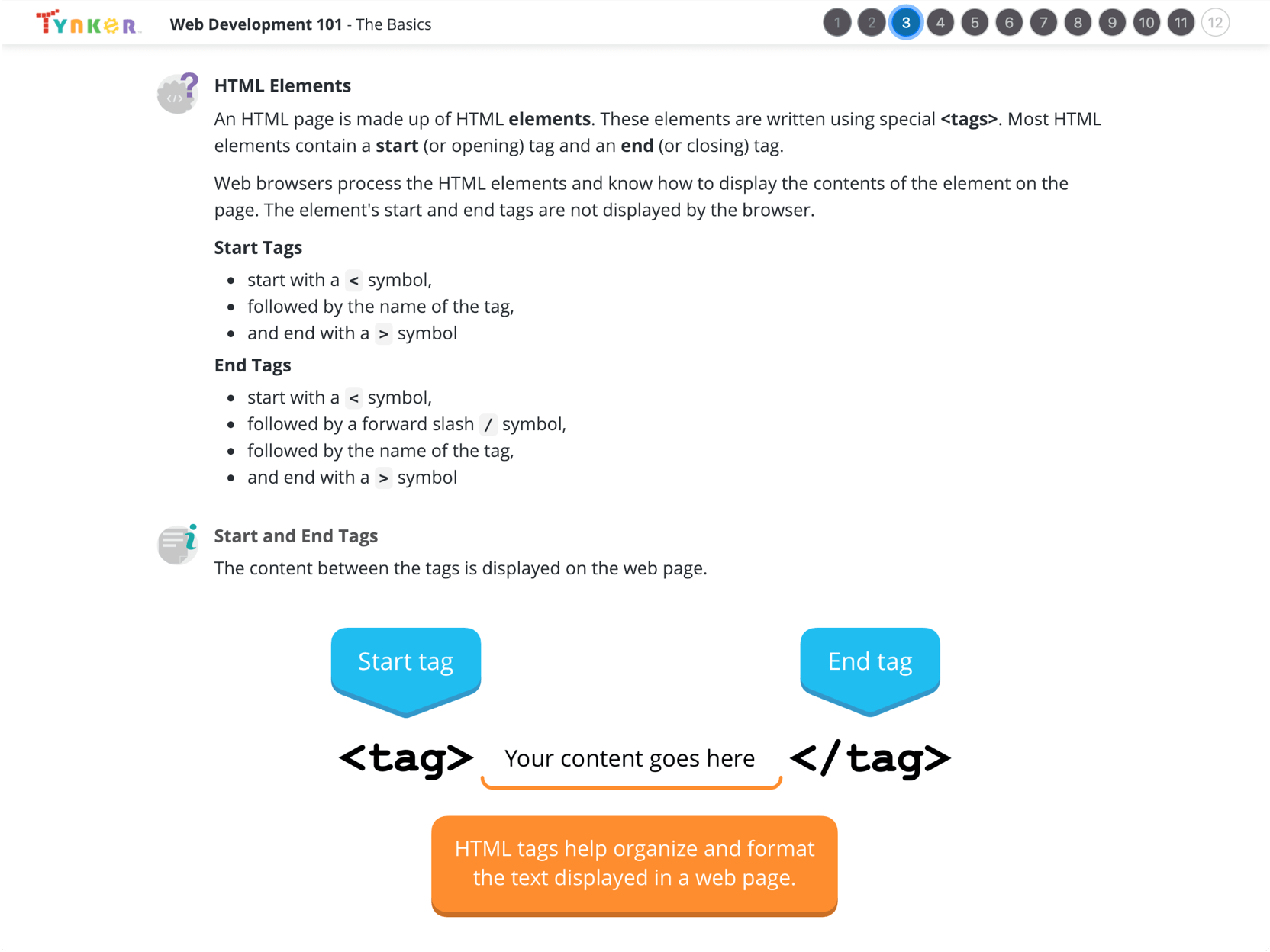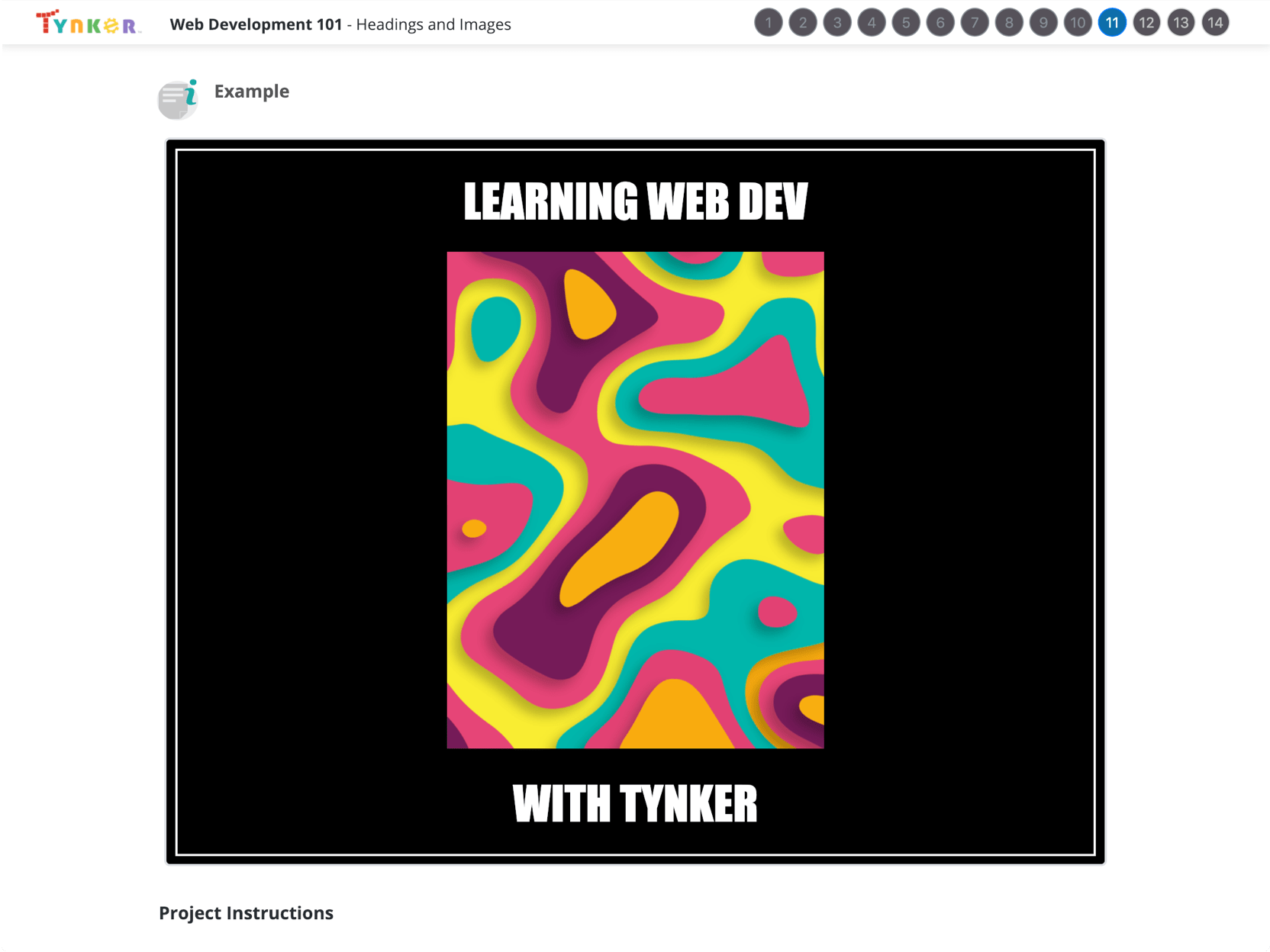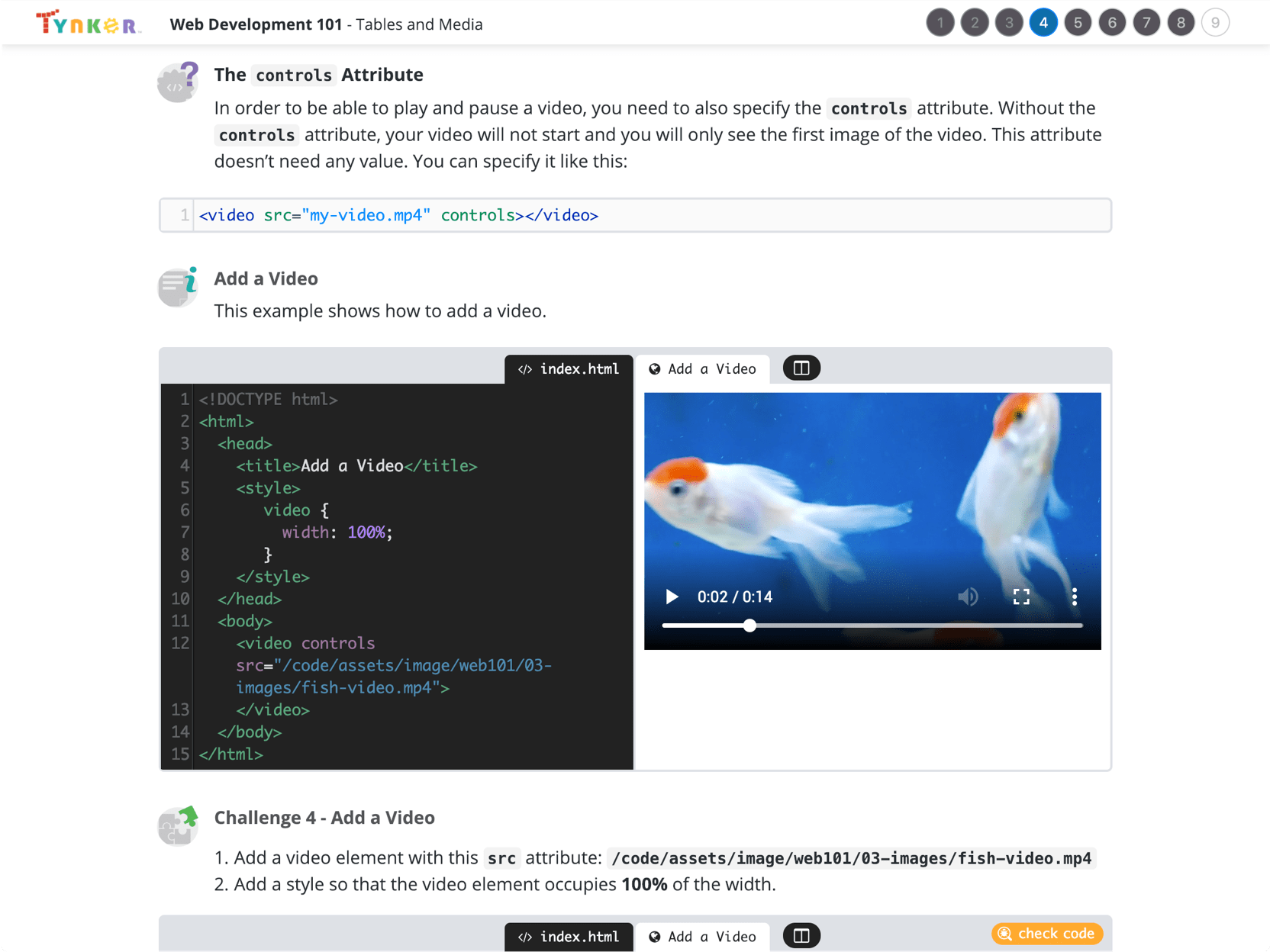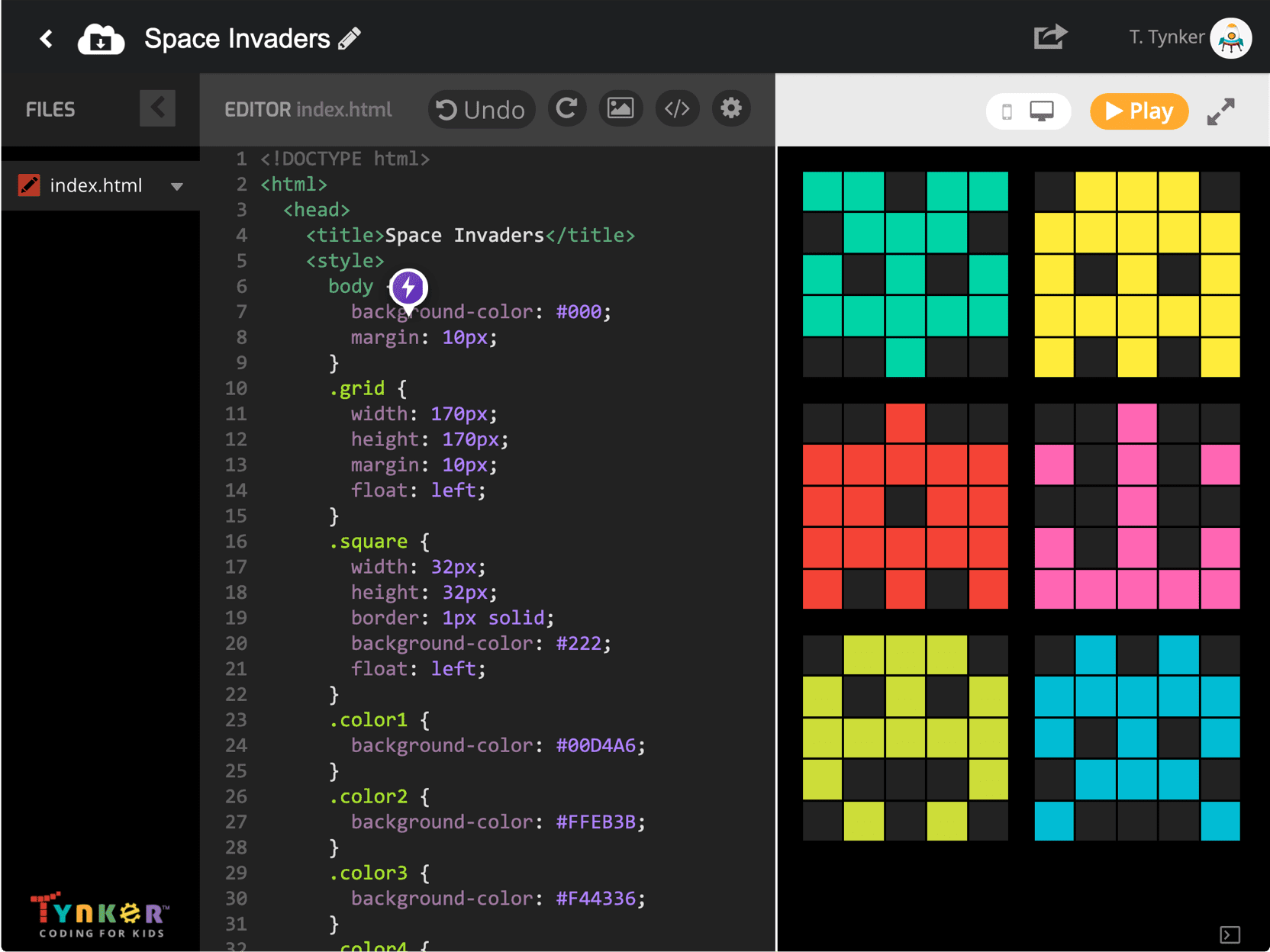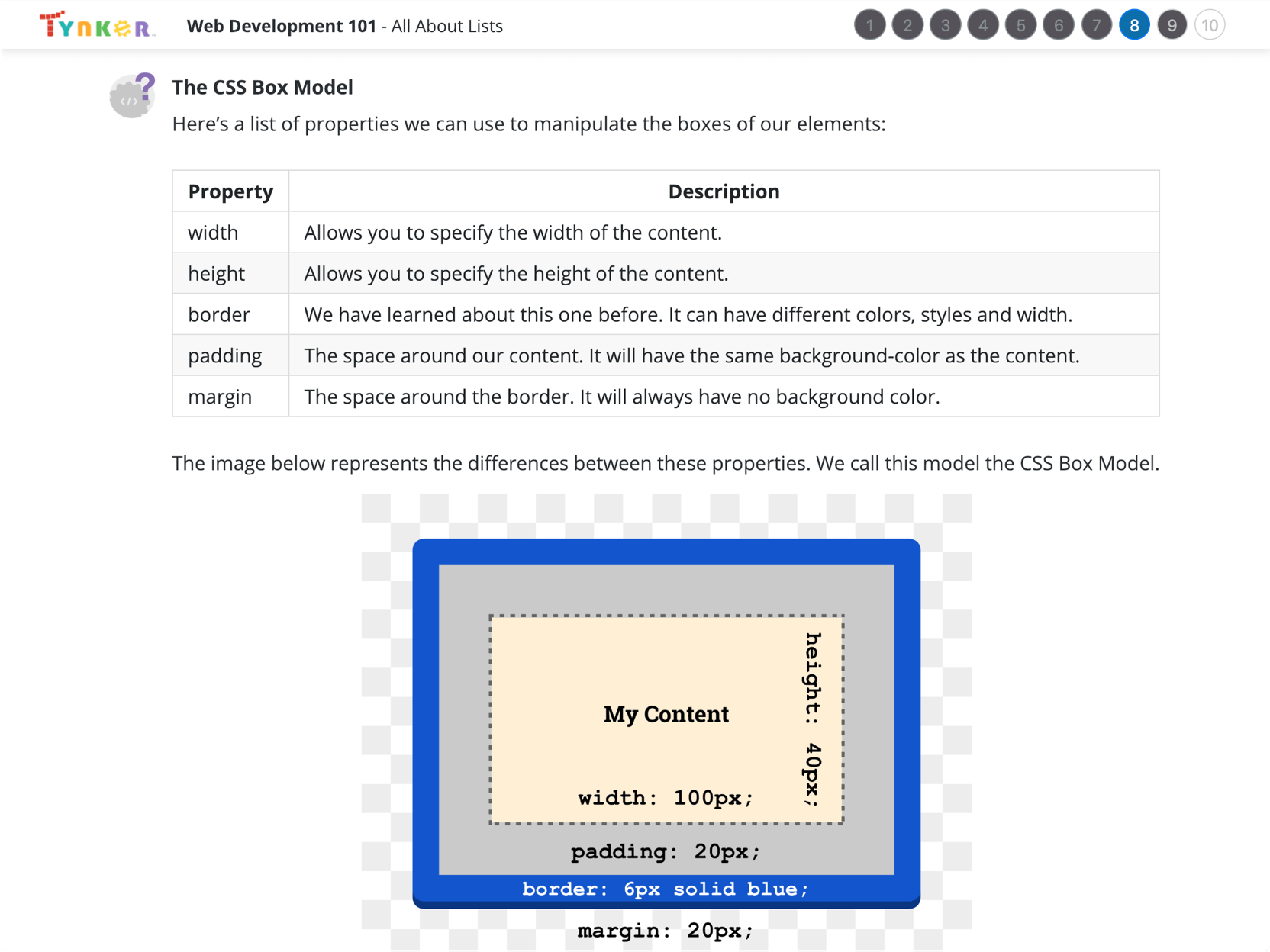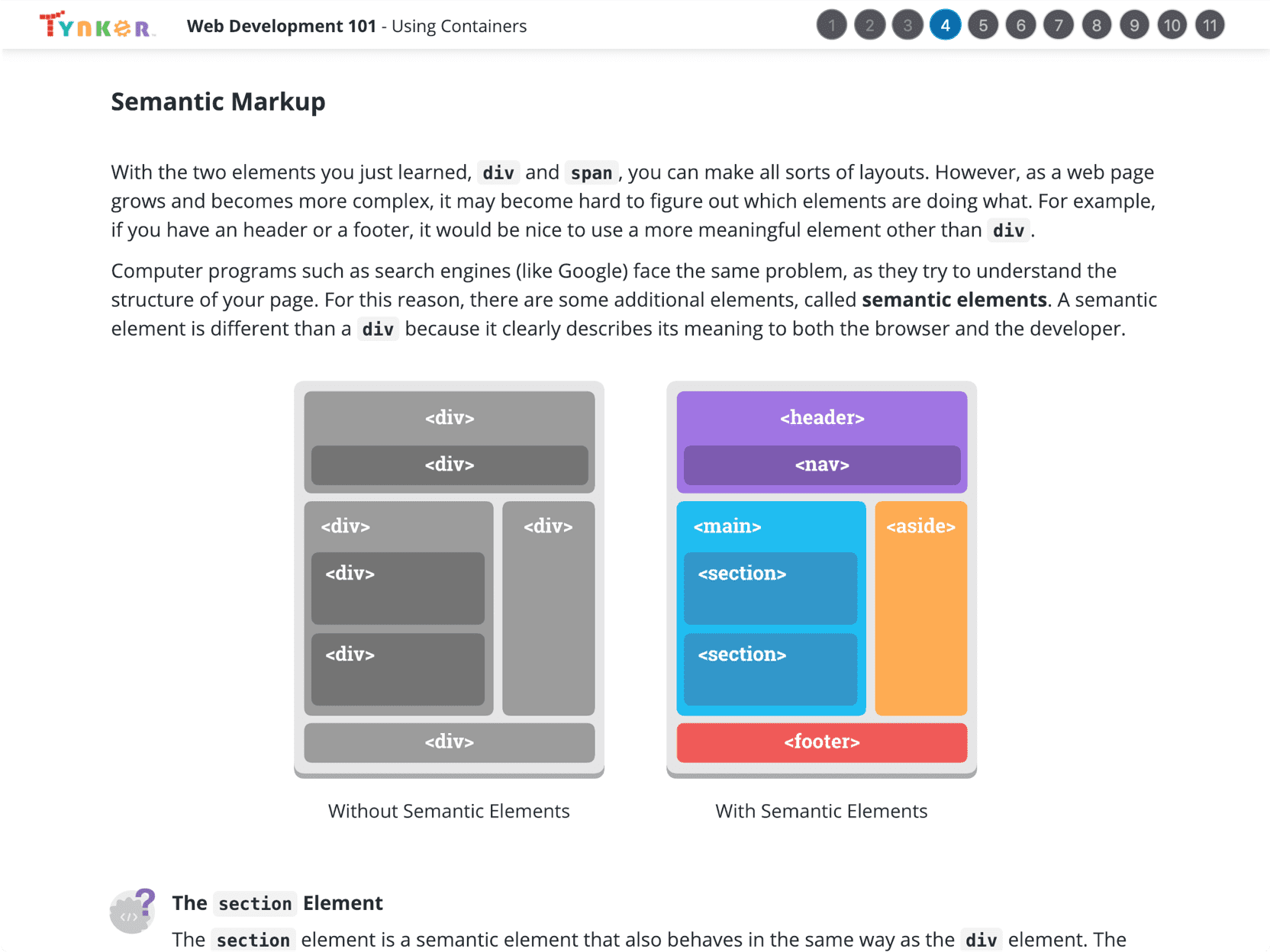High School course
Web Development
- ALL GRADES
- BEGINNER
- WEB
- 10 LESSONS
Answer Key
U.S. Standards
- CCSS-Math: MP.1, MP.4
- CCSS-ELA: RI.7.4, RI.8.4, 6-8.RST.3, 6-8.RST.4, 6-8.RST.7
- CSTA: 2-AP-10, 2-AP-13, 2-AP-16, 2-AP-17
- CS CA: 6-8.AP.10, 6-8.AP.13, 6-8.AP.16, 6-8.AP.17
- ISTE: 1.c, 1.d, 4.d, 5.c, 5.d, 6.b
U.K. Standards
Key stage 3
Pupils should be taught to:- understand several key algorithms that reflect computational thinking [for example, ones for sorting and searching]; use logical reasoning to compare the utility of alternative algorithms for the same problem
- create, reuse, revise and repurpose digital artefacts for a given audience, with attention to trustworthiness, design and usability
- understand a range of ways to use technology safely, respectfully, responsibly and securely, including protecting their online identity and privacy; recognise inappropriate content, contact and conduct, and know how to report concerns
Key stage 4
All pupils must have the opportunity to study aspects of information technology and computer science at sufficient depth to allow them to progress to higher levels of study or to a professional career. Pupils should be taught to:- develop their capability, creativity and knowledge in computer science, digital media and information technology
- develop and apply their analytic, problem-solving, design, and computational thinking skills
- understand how changes in technology affect safety, including new ways to protect their online privacy and identity, and how to report a range of concerns
Description
Design and publish web sites! Students start by building their first web page, and then complete more than a dozen practical projects using HTML to lay out pages and CSS to style them.
Topics Covered: Basic web page design, formatting text and images, numbered and bulleted lists, tables, sections and div blocks, styling using CSS, creating hyperlinks, Embedding video and audio, creating modal popups, building responsive sites, creating pixel art, building a photo gallery, and building an Instagram clone.
What Students Learn
- Build 14 practical web projects
- Learn HTML and CSS syntax
- Design simple web pages
- Design a web profile card
- Create animations, gradients, and effects
- Use lists, tables, and containers
- Build responsive websites
- Create pixel art
- Build a Photo Gallery
- Build an Instagram clone
Technical Requirements
* Online courses require a modern desktop computer, laptop computer, Chromebook, or Netbook with Internet access and a Chrome (29+), Firefox (30+), Safari (7+), or Edge (20+) browser. No downloads required.
